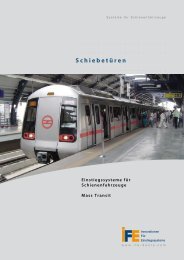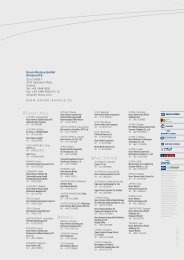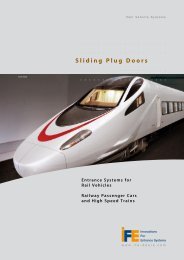Annual Report 2010 - Knorr-Bremse AG.
Annual Report 2010 - Knorr-Bremse AG.
Annual Report 2010 - Knorr-Bremse AG.
Create successful ePaper yourself
Turn your PDF publications into a flip-book with our unique Google optimized e-Paper software.
RepoRt<br />
69<br />
From Europe to the world<br />
In the core European market, decades of experience, state-of-the-art technology and long service intervals<br />
have contributed to the success of the <strong>Knorr</strong> KE valve, which complies with the European UIC<br />
standard. The valve is globally regarded as a synonym for extreme reliability, having proved itself millions<br />
of times. The secret to its success is its continuous development: Improvements and innovations<br />
are tested on <strong>Knorr</strong>-<strong>Bremse</strong>’s UIC test bench in Munich, where engineers can simulate braking of trains<br />
up to 1,500 in length and record the performance data of every individual control valve.<br />
Acquisition of the US company New York Air Brake (NYAB) and the launch of the <strong>Knorr</strong>-<strong>Bremse</strong> DB60<br />
control valve specially designed for the American AAR standard, marked the continuation of <strong>Knorr</strong>-<br />
<strong>Bremse</strong>’s worldwide expansion – and also gave the company access to the South African market,<br />
which uses the same standard. <strong>Knorr</strong>-<strong>Bremse</strong> valves are also installed in trains in Australia, where the<br />
AAR system is used for transportation of heavy iron ore and otherwise the Australian Railways ARA<br />
standard applies.<br />
<strong>Knorr</strong>-<strong>Bremse</strong> was also able to draw on its experience with adapting to the AAR standard when it entered<br />
the Russian market. In close collaboration with the Russian state railways the company developed<br />
valves for trains operating on 1,520 mm gauge tracks. They are designed to be easily installed on<br />
Russian trains and to be compatible with competing valves – but also to offer demonstrable advantages<br />
for operators.<br />
Close collaboration with local experts<br />
For a major project such as development of control valves for the GOST standard it was crucial for<br />
<strong>Knorr</strong>-<strong>Bremse</strong> to have the support of experienced Russian rail experts who were familiar with local<br />
conditions and knew what was important for the Russian market. But despite being able to call on<br />
their experience the project was a major challenge. Whereas in Europe and America the valves are<br />
designed to function at temperatures down to minus 40 degrees Celsius, in Russia the temperature<br />
limit was minus 60 degrees Celsius.<br />
Successful certification<br />
This certification project involved detailed testing of systems, components and materials on special<br />
test benches in Munich over a period of several months. Compatibility tests were backed up by field<br />
and operational testing.<br />
At the end of the year under review an important milestone was reached when the new valves were<br />
certified for the Russian market. Once in-service testing begins in 2011 the company will be well on its<br />
way to becoming a certified supplier of GOST standard control valves for use in Russia and the Commonwealth<br />
of Independent States.


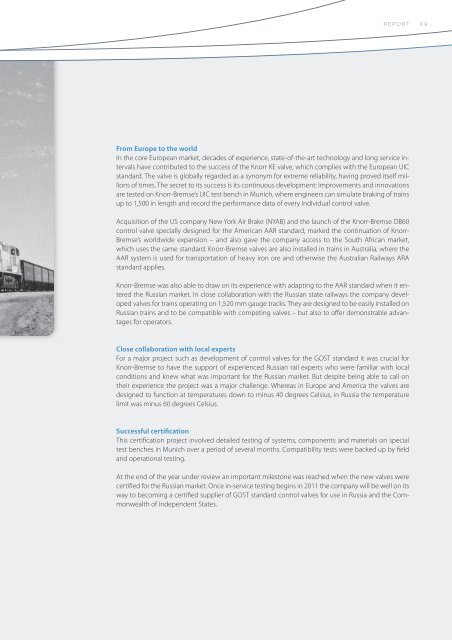

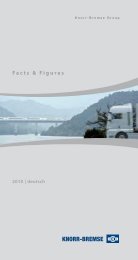

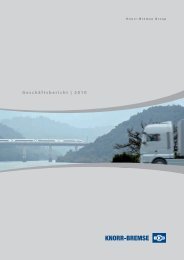
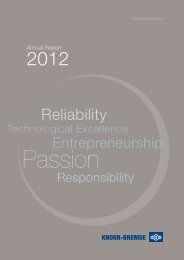
![Geschäftsbericht 2012 [PDF, 13 MB] - Zelisko](https://img.yumpu.com/22524926/1/184x260/geschaftsbericht-2012-pdf-13-mb-zelisko.jpg?quality=85)

